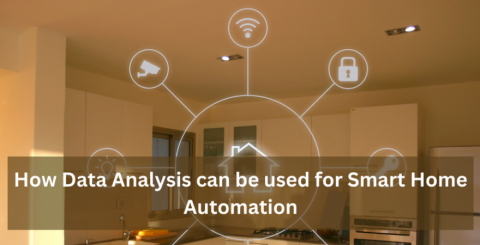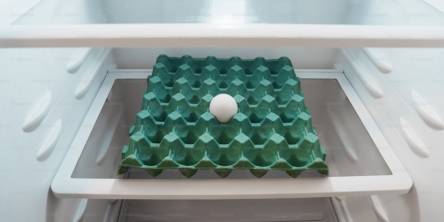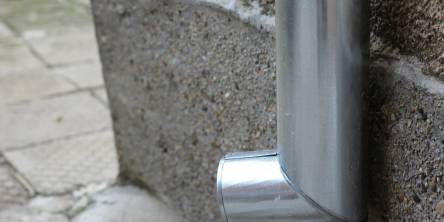How Data Analysis can be used for Smart Home Automation

More and more homes are becoming equipped with smart home devices. Smart homes are equipped with interconnected devices and systems that can be remotely monitored. controlled and automated for increased convenience comfort and energy efficiency.
At the core of this innovation is data analysis By harnessing data generated by sensors devices and user interactions within the smart home ecosystem advanced analytics techniques can unlock a myriad of possibilities to enhance the functionality and efficiency of smart home automation systems.
Data Collection in Smart Home Automation
In smart home automation sensors and IoT devices gather real-time data concerning various aspects of the home environment. Data collected from these sensors can be used and smart home engineers to improve smart home automation.
Common Sensors found in Smart Homes Include:
- Motion Sensors - Tracks movement in a specific area Often used for security though can be used to track individual safety in case of falls and accidents. Lights and other devices can also be paired with motion sensors for comfort.
- Temperature Sensors - Tracks changes in temperature and often accompanied with temperature regulating devices such as Air Conditioning and Heating.
- Humidity Sensors - Tracks present humidity in the air to regulate ideal temperature and air quality.
- Light Sensors - Senses presence of light levels such as daylight to turn on functions such as lighting.
- Door/window Sensors - Senses force intrusion of windows and doors for security.
- Occupancy Sensors - Tracks occupancy of owners to turn on other sensors such as temperature control and light.
The integration of these sensors into smart homes ensures maximum efficiency security and comfort for dwelling occupants.
Use Cases of Data Analysis in Smart Home Automation
Today's smart homes generate a ton of data from all the sensors and devices installed throughout the house. To take advantage of this data and make your smart home as efficient and convenient as possible you need professionals who know how to analyze all that information.
That's where data analysts come in a data analyst can study your home's energy usage data and find ways to reduce waste. They can monitor the data for any potential threats or maybe you just want your smart home to automatically adjust the temperature lighting and other settings to your personal preferences - a skilled data analyst can make that happen too.
So how do you become one of these data experts? By taking comprehensive data analyst paid training program that teach the necessary skills to analyze and monitor data.
Using data analysis in smart homes can split up into four major categories. Energy management security and surveillance comfort and health monitoring.
Energy Management
Peak Load Prediction: Utilize historical energy consumption data and weather forecasts to predict peak demand periods. Adjust smart home systems to optimize energy usage during peak times reducing costs and strain on the electrical grid.
Energy Consumption Optimization: Analyze real-time energy usage data from smart meters and appliances to identify opportunities for efficiency improvements. Implement automated energy-saving measures such as scheduling appliances to run during off-peak hours or adjusting thermostat settings based on occupancy patterns.
Security and Surveillance
Anomaly Detection: Monitor sensor data and user activity patterns to detect anomalies that may indicate unauthorized access or suspicious behavior. Trigger alerts or automated responses to mitigate security risks such as locking doors or activating alarms.
Predictive Security Measures: Use predictive analytics to anticipate potential security threats based on historical data and current trends. Implement proactive security measures such as adjusting lighting and surveillance camera angles in response to identified risks.
Personalized Comfort and Convenience
Adaptive Climate Control: Analyze user preferences occupancy patterns and environmental data to dynamically adjust heating ventilation and air conditioning (HVAC) settings. Create personalized comfort profiles for each occupant and automate temperature adjustments accordingly.
Context-Aware Automation: Incorporate contextual information such as time of day. weather conditions and user location to tailor automation routines. Automatically adjust lighting music and other environmental factors to match the user's current activities and preferences.
Health and Wellness Monitoring
Vital Sign Monitoring: Integrate health monitoring devices such as smart scales blood pressure monitors and wearable fitness trackers to collect real-time health data. Analyze vital signs and trends to identify potential health issues or deviations from normal patterns.
Behavioral Health Analysis: Analyze user activity and behavior data to assess mental and emotional well-being. Identify stressors or triggers and suggest personalized interventions such as relaxation techniques or mood-enhancing activities.
By using data analysis in these key use cases smart home automation systems can enhance energy efficiency. improve security and safety personalize comfort and convenience and support health and wellness goals for occupants.
Challenges and Considerations
As data analysis and collection in smart homes become more commonplace. it is important to take note of potential challenges that can be faced during implementation.
Data Privacy and Security
- Protection of Personal Information: Safeguarding sensitive user data collected by smart home devices from unauthorized access or misuse.
- Secure Data Transmission: Ensuring encrypted communication channels to prevent interception or tampering of data transmitted between devices and cloud servers.
- User Consent and Transparency: Providing clear disclosure of data collection practices and obtaining informed consent from users for the use of their data.
Interoperability of Devices and Systems
- Compatibility Issues: Ensuring seamless integration and communication between diverse smart home devices and platforms from different manufacturers.
- Standardization Efforts: Promoting the development and adoption of industry-wide standards and protocols to facilitate interoperability and minimize compatibility challenges.
- Integration Complexity: Addressing technical complexities in integrating legacy systems and emerging technologies within the smart home ecosystem.
Scalability and Performance
- Handling Large Volumes of Data: Managing the increasing volume and complexity of data generated by a growing number of interconnected devices and sensors.
- Processing Power and Resource Allocation: Ensuring sufficient computational resources and bandwidth to support data analysis and automation tasks in real-time.
- Optimization for Efficiency: Implementing strategies to optimize system performance and minimize latency, particularly in latency-sensitive applications such as security and energy management.
User Acceptance and Trust
- Privacy Concerns: Addressing user apprehensions about data privacy and security risks associated with smart home technology.
- Usability and User Experience: Designing intuitive interfaces and user-friendly experiences to encourage adoption and engagement with smart home automation features.
- Building Trust: Establishing transparent communication channels and providing reliable customer support to foster trust and confidence in smart home products and services.
Navigating these challenges requires collaboration among industry stakeholders policymakers and consumers to develop and implement effective solutions that prioritize privacy, security, interoperability, scalability and user trust in smart home automation systems.
Future Directions and Innovations
Smart home systems are increasingly integrating with broader smart city initiatives and infrastructure. By embracing these future directions and innovations smart home automation systems can evolve to become more intelligent efficient and responsible. ultimately enhancing the quality of life for users while addressing emerging challenges and opportunities in the digital age.
Final Takeaway
Data analysis plays a pivotal role in shaping the future of smart home automation. offering transformative opportunities to enhance efficiency convenience and quality of life for users. By harnessing the wealth of data generated by sensors, devices and user interactions within the smart home ecosystem advanced analytics techniques enable intelligent decision-making and automation tailored to individual preferences and needs.
As technology continues to advance the possibilities for creating smarter more connected and more sustainable homes are endless ushering in a new era of intelligent living.
Frequently Asked Questions
How does data analysis contribute to energy efficiency in smart homes?
Data analysis helps identify patterns in energy usage and environmental conditions allowing smart home systems to optimize heating, cooling, lighting and appliance usage for maximum energy efficiency and cost savings.
Can data analysis enhance home security in smart home systems?
Yes. data analysis enables smart home systems to analyze sensor data and user behavior patterns to detect anomalies or security threats trigger alerts and take proactive security measures such as locking doors or activating cameras.
How is data analysis used to personalize user experiences in smart homes?
By analyzing user preferences habits and routines smart home systems can tailor automation settings adjust environmental conditions and offer personalized recommendations to enhance comfort convenience and satisfaction for occupants.
Similar Articles
You should maintain a clean and well-organized kitchen as it will lead to a healthier and happier life. In this respect, there are various convenient little aids, which come to the rescue in this matter.
When we think of home maintenance, we typically imagine spring and summer as the prime times to tackle repairs and upkeep. After all, the weather is warmer, the days are longer, and outdoor tasks seem far more manageable.
Explore modern facade design, including materials, sustainability, technology, and how facades shape building performance and visual identity.
Choose the right outdoor lighting color temperature to enhance your home’s siding, landscaping, and architecture, including tips for warm, cool, and daylight tones.
Discover what a funeral concierge is and how they help families with personalized guidance, planning, and support during end-of-life arrangements.
Learn how professional custom framing boosts art value and longevity. Get insights on frame styles, mounting, and protective techniques.
Boost drain cleaning efficiency with water jetters. Learn how high-pressure water systems remove tough clogs, reduce downtime, and protect pipes.
Picture this: you wake up scratching, spot a couple of weird red marks, shrug, and get dressed for work.
Here's the thing about building a custom home, it's probably the largest check you'll ever write, and yet so many people dive in without a solid game plan.









